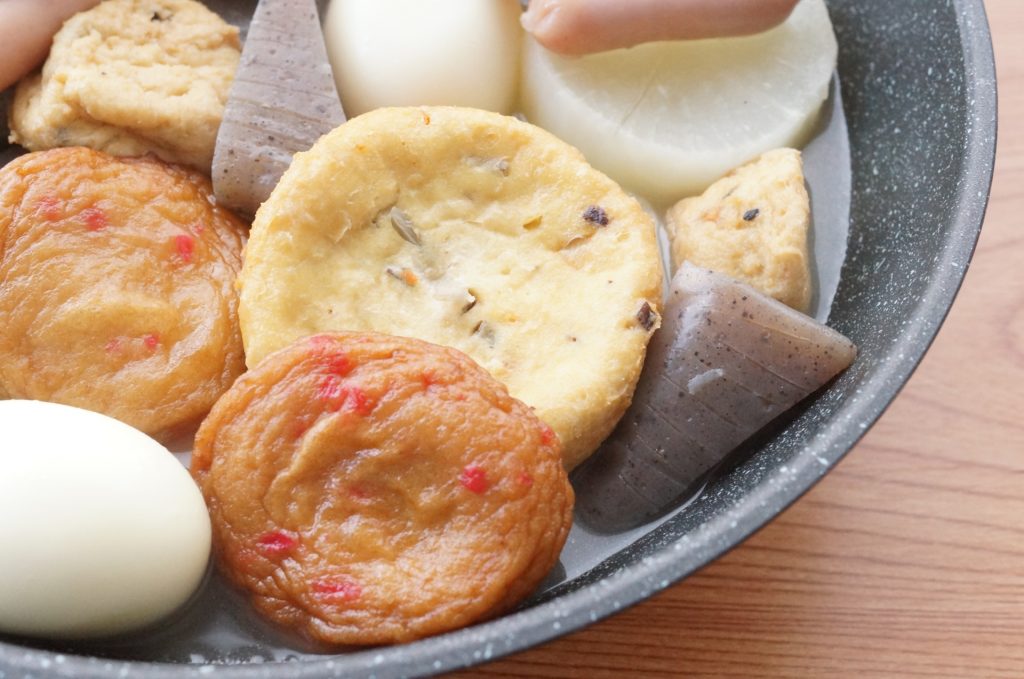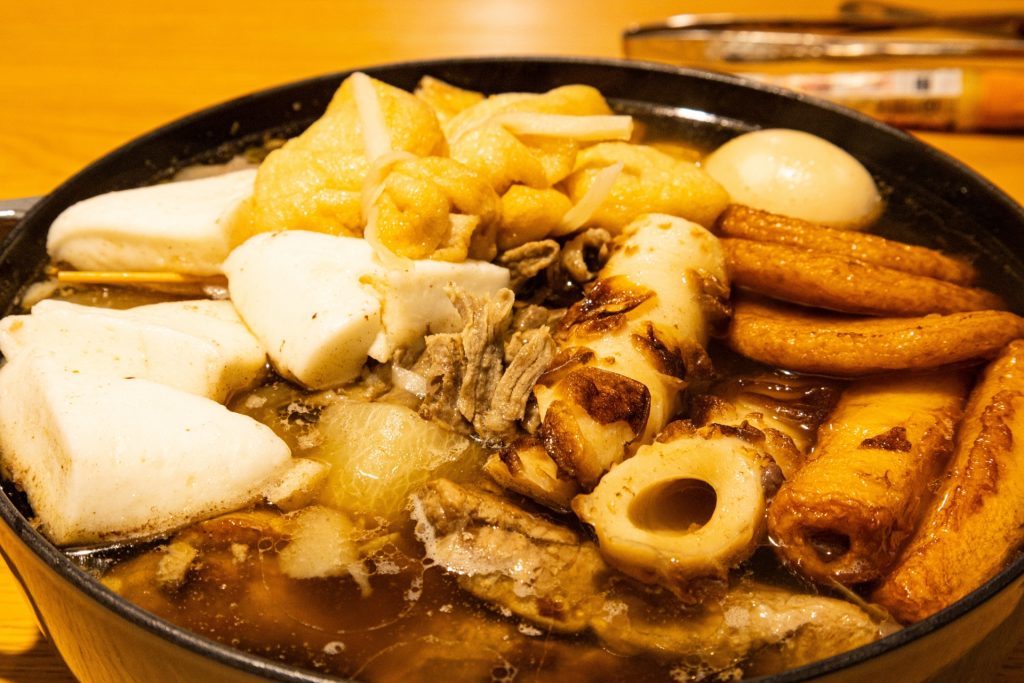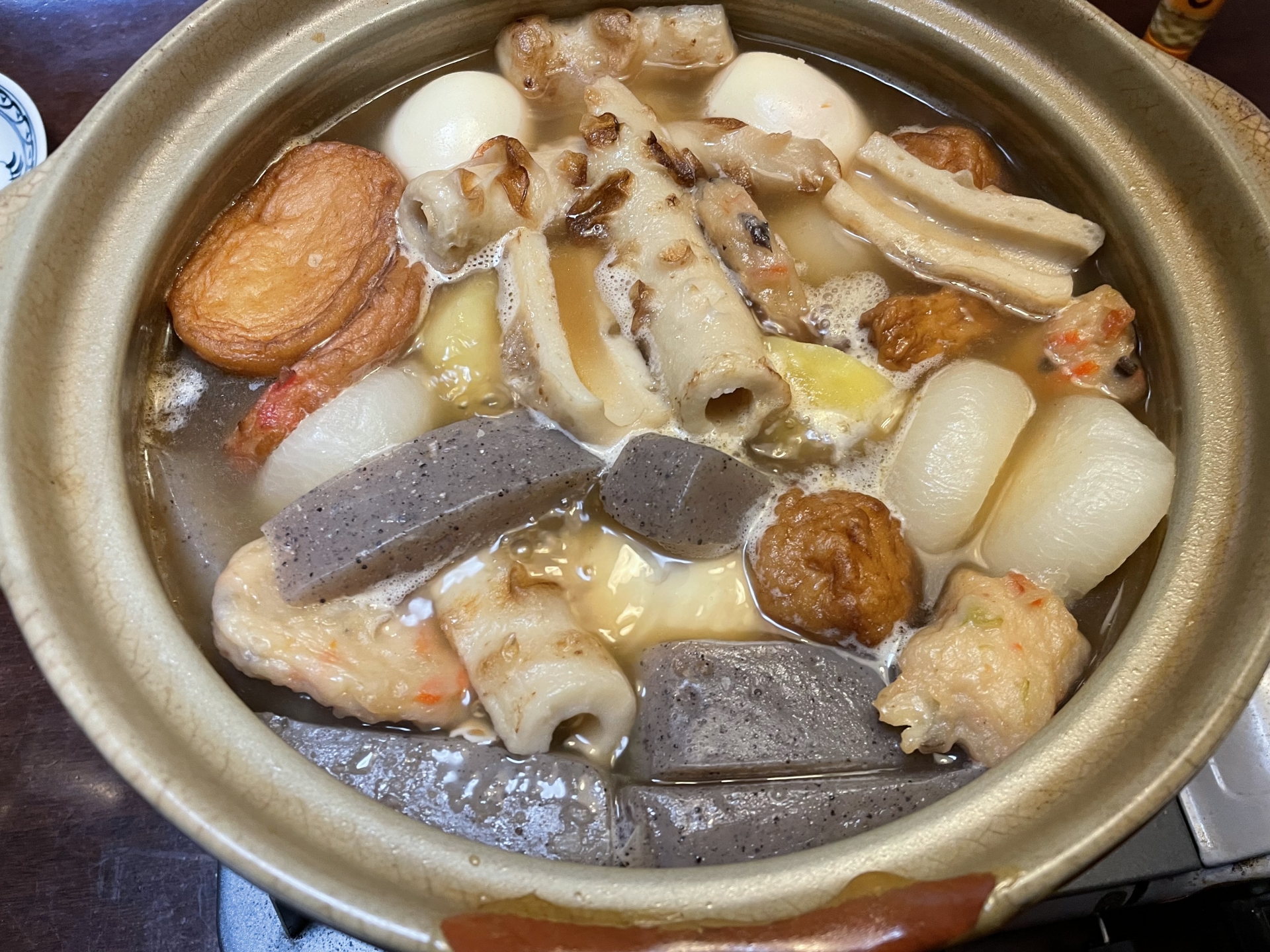When it comes to winter comfort food in Japan, “Oden” is undoubtedly one of the most iconic dishes. Imagine a cold night warmed by the delicious aroma of simmered broth wafting through the air. Whether enjoyed at a street stall, an izakaya, or even at home, oden has a special ability to warm both the body and soul. But how much do you actually know about this deceptively simple dish?
In this article, we’ll dive into the fascinating history of oden, explore its regional variations, and even recommend a few of the best places to try it. If you’re already an oden fan or are just curious about it, this guide will take your appreciation for oden to the next level!
What Exactly is Oden? The History and Its Origins

First, let’s look at the roots of oden and how it has evolved throughout Japanese history. Learning more about its journey makes it taste even better, right?
The Origin of Oden: It All Started with “Dengaku”
The predecessor of oden is a dish called “Dengaku,” which originated in the Heian period (794–1185). Dengaku consisted of tofu or konjac skewered on sticks and grilled with savory miso paste. It was a simple yet flavorful dish, popular for its combination of miso’s richness and the natural flavors of the ingredients.
In the Edo period (1603–1867), however, a major shift occurred. Rather than grilling the skewers, people began simmering them in broth, making the dish heartier and more satisfying. This transformation led to the creation of the oden we recognize today.

Why is it Called Oden?
The name “Oden” comes from the word “Dengaku” (as in “Den-gaku”). Over time, a respectful “O” was added before the word to become “O-den,” reflecting the affection people developed for this dish.
Staple Ingredients and Regional Variations of Oden
Oden is famously adaptable, with recipes that vary depending on where you try it. While there are universally loved ingredients, each region in Japan also has its own unique twist on the dish.
Common Ingredients Loved Nationwide

- Daikon (Japanese radish): The star of almost every oden! Cut into thick slices and simmered until tender, daikon absorbs the broth and explodes with flavor when eaten.
- Eggs: Hard-boiled eggs are a classic addition, their yolks infused with the umami of the broth.
- Konjac (Konnyaku): This chewy, low-calorie ingredient is a must for texture lovers.
- Chikuwabu (Kanto Region): A wheat-based ingredient with a chewy, mochi-like texture. While highly popular in Tokyo, it’s less common in regions like Kansai.
- Ganmodoki: Deep-fried tofu mixed with bits of vegetables and sesame. It soaks up the broth beautifully, adding texture and depth.
Unique Regional Twists on Oden
- Kansai Region (Western Japan): Kansai-style oden is characterized by a light, clear dashi broth made with kombu and lightly-seasoned soy sauce. It commonly includes items like beef tendon or octopus.
- Shizuoka Prefecture: Known for its “black hanpen,” a fishcake made from sardines or mackerel. Locals enjoy sprinkling dried bonito flakes and aonori (seaweed powder) on top of their oden.
- Kyushu Region (Southern Japan): Kyushu’s oden often includes unique ingredients like pork trotters or chicken offal. The broth tends to be richer and slightly sweet, thanks to the local preference for bolder flavors.
Fun Facts About Oden You Probably Didn’t Know
1. The Power of Broth: A Regional Identity
Oden broth (or “dashi”) is the soul of the dish. In Kansai, people use a lighter, clear broth flavored with white soy sauce or salt. In contrast, Kanto’s oden features a darker, more robust broth made with regular soy sauce. In Hokuriku (along Japan’s northern coast), the broth is often enhanced with sake to provide extra richness.

2. The Rise of Convenience Store Oden
Convenience store (konbini) oden has revolutionized how people enjoy the dish. It first became popular in 1979, introduced by 7-Eleven. Thanks to its affordability and accessibility, it quickly became a seasonal staple, granting oden a new set of fans, including foreign visitors.

Places to Try Oden: Must-Visit Restaurants in Japan
If you’re looking to taste truly authentic oden, these highly-rated restaurants and oden specialists won’t disappoint:
Otakou (Tokyo)
Founded over 100 years ago, this Edo-style oden eatery is an iconic landmark. Their signature dish, “Tomeshi,” is a simple bowl of rice soaked in oden broth. It’s comfort food at its best.
Mikawaya (Shizuoka)
This restaurant is located in the renowned Shizuoka Oden Alley. Don’t miss their “black hanpen” and locally famous toppings like aonori and powdered fish flakes for an authentic Shizuoka experience.
Takoume (Osaka)
Known as one of Japan’s oldest oden restaurants (founded in 1854), this legendary eatery specializes in tender octopus and other uniquely-prepared ingredients, paired with a sweet Kansai-style broth.

Tips for Making Oden at Home
Want to try your hand at making oden? These tips will help you create a delicious pot of oden in your own kitchen!
Choose a Good Broth for Success
Homemade broth is best, and a simple combination of kombu (kelp) and katsuobushi (bonito flakes) will do the trick. If you’re short on time, premade broth packs are a convenient alternative—just choose one with minimal additives for the best results.
Let Your Oden Rest for Maximum Flavor
The secret to making great oden is to give it time to rest. After simmering, allow it to cool before reheating. This cooling period helps all the flavors permeate deeply into the ingredients, making them even more delicious.
The Versatility of Oden: How Will You Enjoy It?

Oden is more than just a dish—it’s a true cultural experience. Whether you dive into regional specialties, recreate it at home, or visit a famous oden shop, there are countless ways to enjoy this comforting winter staple. This winter, why not add a twist to tradition and personalize your oden journey? It might just become your new favorite dish.














